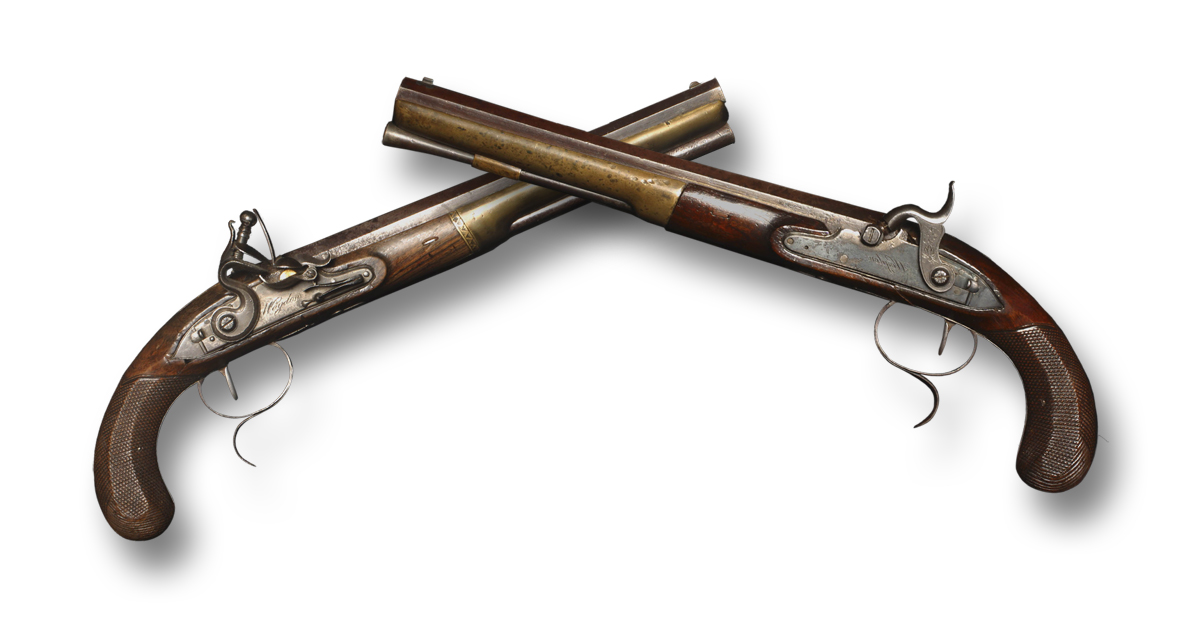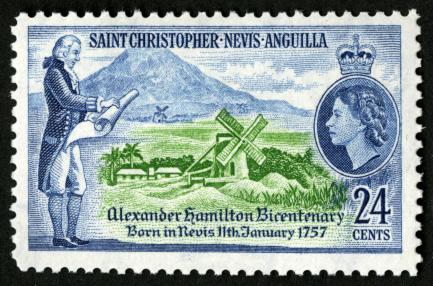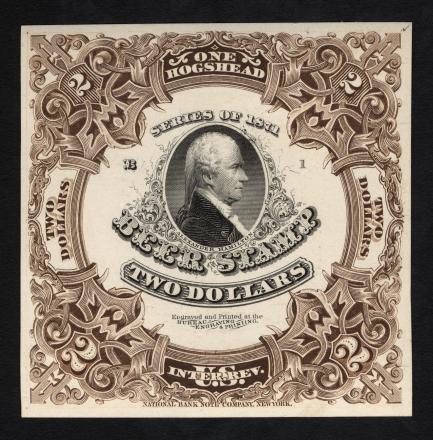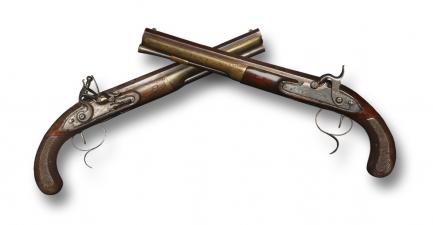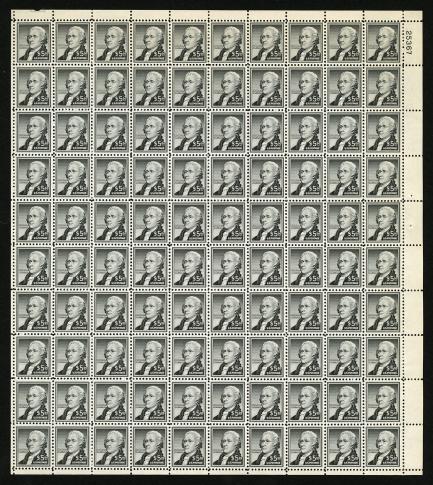National Postal Museum To Open Alexander Hamilton Exhibition
The pistols used in the infamous 1804 duel between Alexander Hamilton and Aaron Burr will be on display May 25 through June 24 at the Smithsonian’s National Postal Museum. They are featured in the exhibition “Alexander Hamilton: Soldier, Secretary, Icon,” along with mail, portraits, and postage and revenue stamps reflective of Hamilton’s life and career as the first U.S. treasury secretary.
The full exhibition remains on view through next March. Its opening in late May is set to coincide with the June opening of the hit Broadway play, Hamilton: An American Musical, at the Kennedy Center in Washington, D.C.
The original dueling pistols used by Hamilton, former secretary of the treasury and retired two-star general, and Vice President Aaron Burr in the duel that resulted in Hamilton’s death are on loan to the museum from JPMorgan Chase & Co. This rare public showing represents the first time the pistols have been on public display in the Washington area.
Hamilton was born on the British Caribbean island of Nevis in 1755, deserted by his father at age 11 and raised by his mother who died when he was 13. Shortly after his arrival in New York in 1772, long-simmering tensions between Great Britain and its North American colonies erupted into open war. An orphan with few influential connections, Hamilton saw the American Revolution as an opportunity for rapid social advancement. He committed to the revolution and decided he and America would sink or swim together.
In the 215 years since his untimely death at 39 in the duel with Burr, Hamilton has become an American icon. Stamps, money, movies, television miniseries, and now a hit Broadway musical, commemorate his meteoric rise and his sweeping vision for America’s future.
“In a Federalist-style gallery within the museum’s William H. Gross Stamp Gallery, visitors will see objects highlighting Hamilton’s extraordinary influence on our country,” said Elliot Gruber, director of the museum. “Visitors of all ages will be drawn in to the man behind the musical that is sweeping the nation.”
In a scene that is scarcely imaginable today, on July 11, 1804, Burr killed Hamilton in a duel. Burr had lost the U.S. presidential election of 1800 and the New York governor’s race of 1804. He blamed Hamilton’s outspoken opposition for both losses—especially a letter attributed to Hamilton and published in the Albany Register that referred to Burr as “despicable.” Burr then issued the challenge to a duel, which was set for a location outside New York City in nearby New Jersey.
The pair of flintlock pistols have been described by Hamilton scholar and author Ron Chernow as having “the best claim to authenticity” as the pistols used in the famous duel.
Made of walnut, brass and gold, and each weighing several pounds, the pistols were manufactured in England by the celebrated gunsmith Robert Wogdon. They were owned by Hamilton’s brother-in-law, John Barker Church, who had himself dueled with Burr in 1799 over a different matter (and using a different set of pistols).
Far from vindicating himself as he had hoped, Burr instead became a pariah. Indicted for the capital crime of murder in both New York and New Jersey, he was forced into hiding. President Thomas Jefferson dropped him from the Democratic–Republican presidential ticket, and later ordered Burr’s arrest on treason charges stemming from an alleged plot to set up an independent country in the Louisiana Purchase territories. Burr was eventually acquitted of murder, dueling and treason, and he resumed a modest law practice in New York but died bankrupt and living in a Staten Island boarding house in 1836.
“History remembers Alexander Hamilton as the pioneering first secretary of the treasury, but he was also responsible for the Post Office Department,” said Daniel Piazza, chief curator of philately. “He used the mail to collect import and export data from customs officers all over the country, and his ability to interpret this data made Hamilton the best informed member of Washington’s first Cabinet.”
About the Smithsonian’s National Postal Museum
The National Postal Museum is devoted to presenting the colorful and engaging history of the nation’s mail service and showcasing one of the largest and most comprehensive collections of stamps and philatelic material in the world. It is located at 2 Massachusetts Ave. N.E., Washington, D.C., across from Union Station. The museum is open daily from 10 a.m. to 5:30 p.m. (closed Dec. 25). For more information about the Smithsonian, call (202) 633-1000 or visit the museum website at www.postalmuseum.si.edu.
# # #
SI-286-2018
Marty Emery
202-431-8963
emerym@si.edu

